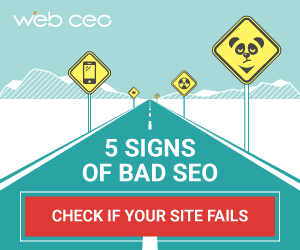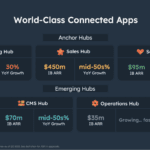Just before the holidays I had a chat with HubSpot’s VP of Media, Jonathan Hunt.

Jonathan’s a badass innovator who’s led marketing and audience growth for a long list of cool media organizations, from Complex Networks and National Geographic to Vox Media and VICE. So naturally I was curious where he sees the media business going in 2024.
Here’s his take: Using AI in the media will go from gaffes and skepticism to necessity in 2024. This is the year media leaders, creators and operators start to make AI work.
Source: Google Trends, six-month rolling average
He’s onto something. The market size of AI use in media and entertainment reached $19.8B in 2023, a number that’s poised to 5x in 2030.
Get more business ideas and trendy data in our weekly Trends Newsletter.
What’s Driving The Trend
From newsrooms to film studios, the media industry is adopting AI en masse and feeling its impact on their work. Jonathan sees three forces driving AI to be even more embraced in media orgs this year:
Efficiency
Creating value for consumers is the unchanging rule in the media and entertainment world. If AI can continue to help creators and operators be more efficient, then it becomes a necessity and less of a threat.
Personalization
The world around us is already going in a highly personal and curatorial AI direction. It’s evident in:
- What we get served up in Google search results
- What we discover on Netflix and Spotify
- What newsletters we receive in our inbox
The ingrained product experiences and editorial expectations of audiences determine how they engage. Media companies that get AI personalization right will win audience mindshare, and much more.
Time
AI may seem like a threat today, but so was data and video, once. Today they’re instilled in the DNA of modern media company cultures – you can’t think about creating and distributing content without the two.
But at one point, data and video were in the same bucket as AI. The companies that were early to experiment and make it work for them got out ahead and, in many cases, still are.
Despite many media orgs experimenting with AI, few have moved past experimentation and truly unlocked AI’s potential to help creators and operators on the ground.
AI use in media is below the median maturity level. Source: Accenture
Here are three ways media leaders can ensure AI have a real impact on their businesses in 2024:
1. They’ll Stop Being Lazy
Let’s get one thing straight: AI can’t be a shiny object to goose your share price, a top-down mandate, or the panacea for declining traffic and revenue.
But in so many cases (like this, this and this), that’s how it’s seemingly been deployed in media teams.
This is not only aggravating existing concerns around AI use and ethics – and rightfully so – it’s also just lazy.
The leaders that succeed in 2024 will be the ones that do the work of making AI work, largely behind the scenes, for their media businesses.
2. They’ll Build Proper Systems
Media leaders should work with journalists and content creators, identify the pain points in their processes, and build responsible AI systems that empower them to do things they couldn’t do alone.
The system can help with:
Collecting massive datasets that would’ve otherwise taken hours or days to source
Producing first drafts of translated stories to be edited and published for greater audience reach
Taking seeds of story ideas and providing new avenues to take them
These leaders also need to create governance frameworks to ensure transparency, accountability, and fairness. But above all, they’ll have to think people-first, for people that are using AI as well as the audiences they need to reach.
3. They’ll Have to Address AI’s Brand Problem
The portraits of tech-noir dystopias where humans are knowingly (but often unknowingly) in service to a threatening technological force aren’t doing anyone any favors.
The portrayal of AI can be menacing, and all these AI-related blunders advance that narrative. While you’ve gotta break a few eggs to make an omelet, it’s critical to proactively address the mistakes, and learn not to repeat them.
For example, media leaders should ensure that their AI-enabled productivity is one that informs the creative processes, rather than drives it. And don’t forget to collaborate with content and product teams to devise this approach, rather than it coming from the top down.
The good news is, more media orgs are committing to this mission and taking AI adoption seriously. It’s an exciting trend to keep watching in the years to come.
Want more content like this? Sign up for our weekly Trends email, filled with data, deep dives, and trend insights for business builders, entrepreneurs and innovative professionals.







